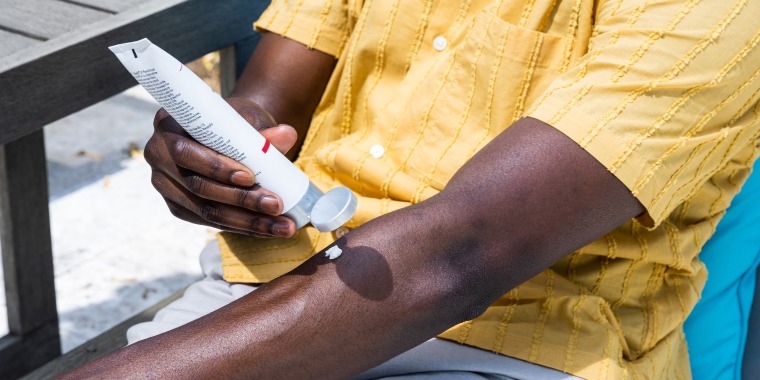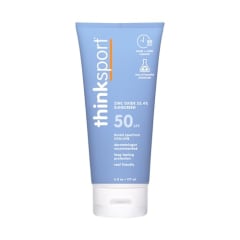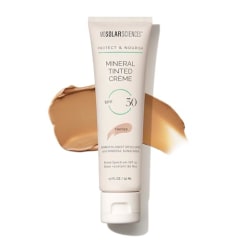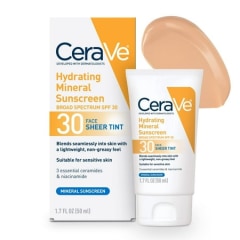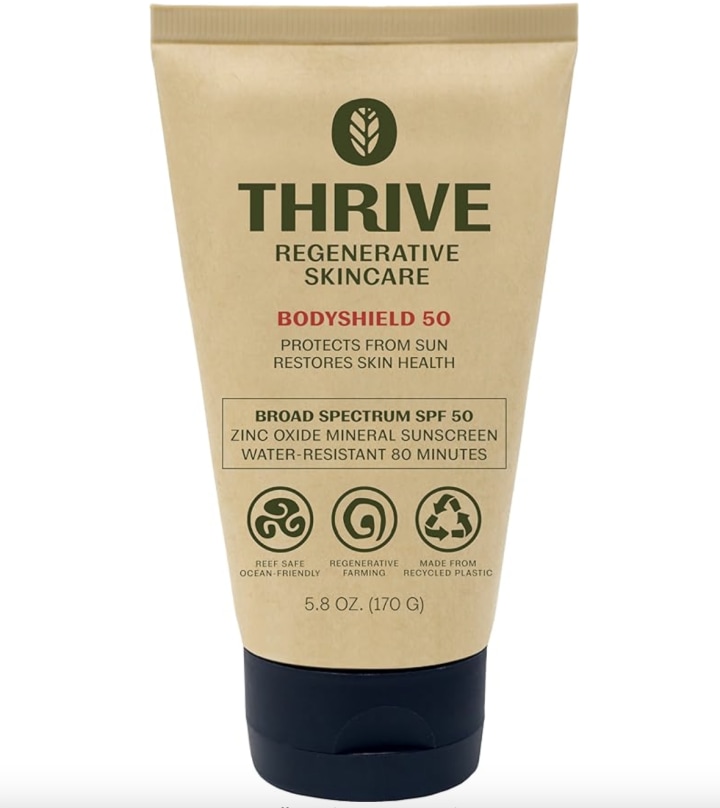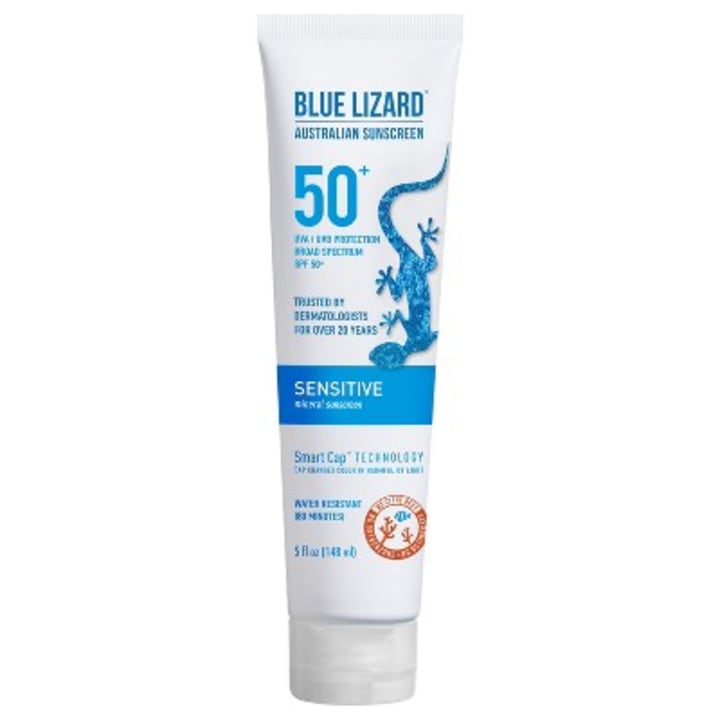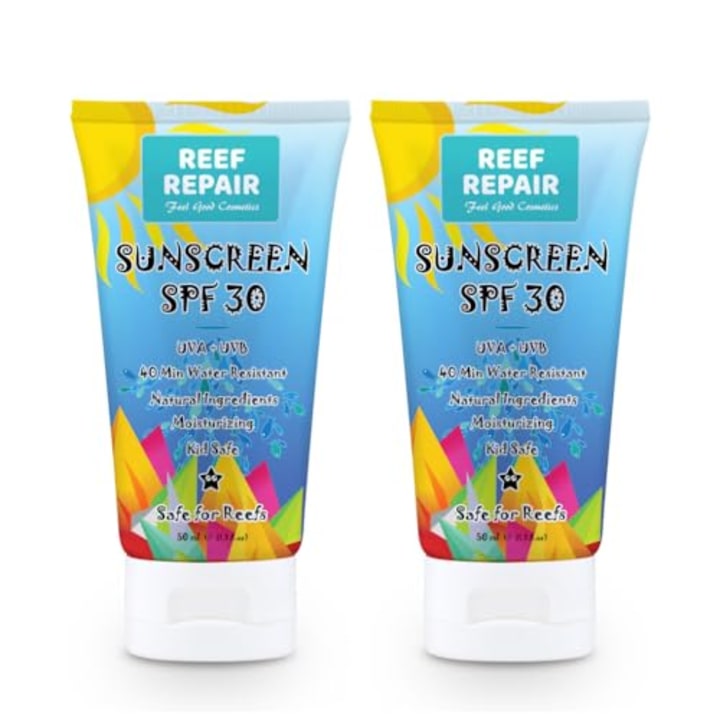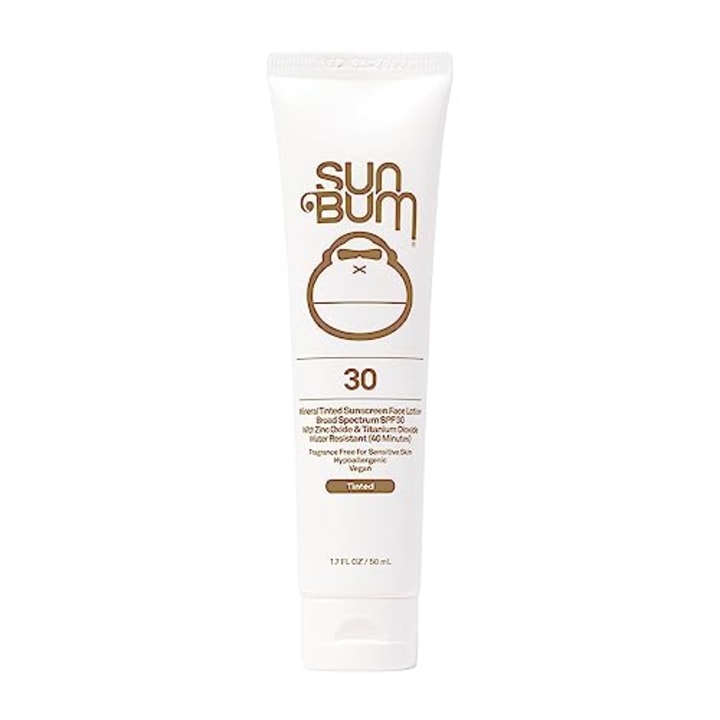Wearing sunscreen regularly is a must — no matter your age or skin tone. It not only helps protect against skin cancer, but can also help prevent premature wrinkles and age spots, according to the The American Academy of Dermatology.
There are a lot of factors to consider when shopping for the right SPF. For example, you may require sunscreen for sensitive skin or need a kid-friendly SPF formula. Another consideration you may want to think about: Picking an environmentally friendly product — especially if you’ll be spending lots of time near the ocean. According to experts, certain chemicals in your SPF could rinse off in water and impact ocean ecosystems.
SKIP AHEAD The best reef safe sunscreen of 2023 | How to shop for reef safe sunscreen | How to apply sunscreen correctly
Specifically, research suggests that chemicals such as oxybenzone and octinoxate have a negative impact on coral reefs. (An estimated 25% of all marine life depends on coral reefs for survival, according to the Environmental Protection Agency.) It’s so harmful that places like Hawaii and Key West, Florida, no longer allow the sale of sunscreen containing oxybenzone and octinoxate.
That’s where reef-safe sunscreen comes in. “These sunscreens tend to be mineral-based, utilizing ingredients like titanium dioxide and zinc oxide to provide physical, rather than chemical, sun protection,” says Dr. Divya Shokeen, a board-certified dermatologist at the Ocean Skin and Vein Institute in California.
To help you shop for reef-safe formulas, we spoke to dermatologists and environmental experts about what to look for in an SPF that will protect both you and the environment. Then, we rounded up expert picks, along with highly rated options that met their standards.
How we picked the best reef-safe sunscreen
We interviewed two dermatologists and an environmental expert about what to look for in a sunscreen that will protect your skin from harmful rays, while not damaging coral reefs or other ocean ecosystems. The experts we spoke to recommend keeping the following factors in mind when shopping:
- Reef-safe ingredients: There are two types of sunscreens: chemical and mineral. Chemical sunscreens use ingredients to filter out UV rays, whereas mineral (also known as physical) formulas sit on top of your skin and reflect rays away. The former contain oxybenzone and octinoxate, two ingredients that research suggests can be harmful to the ocean ecosystem by bleaching coral reefs and damaging their DNA. For this list, we selected mineral formulas, none of which contain oxybenzone octinoxate. Instead, they incorporate physical blockers like titanium dioxide and zinc oxide. “When shopping for reef-safe, mineral sunscreens, look for something containing zinc or titanium as the active ingredients,” says Dr. Brendan Camp, a board-certified dermatologist at MDCS Dermatology in New York City.
- Level of protection: You want to protect the ocean, but you also need to protect your skin. To do so, look for broad-spectrum products with an SPF rating of at least 30. (Broad-spectrum protection means your skin will be safe from both UVA and UVB rays).
- Water-resistance: Denoted by time (typically 40 or 80 minutes), this refers to how long your sunscreen will stay on wet skin. Water-resistant sunscreens serve a couple of purposes, according to our experts. Firstly, the better your sunscreen stays on your skin , the more protected you are. And second, your SPF will be less likely to wash off and harm the ocean.
The best reef-safe sunscreen
To help you find the best reef safe sunscreen, we considered recommendations from dermatologists, along with highly rated options from brands like Cerave, Blue Lizard and more. None of our recommendations contain oxybenzone or octinoxate.
Best overall: ThinkSport SPF 50+ Mineral Sunscreen
This water-resistant formula is a favorite of Camp’s because it is environmentally friendly, offers broad-spectrum protection and has skin-boosting benefits. This zinc oxide-based formula absorbs quickly and doesn’t feel sticky or oily going on. “In addition to SPF 50 protection, it includes antioxidants like vitamin E and moisturizing ingredients like jojoba oil,” he says. “Whereas some sunscreens feel sticky going on, this one feels smooth thanks to these ingredients, which also help nourish your skin as you wear it.”
Best for body: Thrive Bodyshield SPF 50 Suncreen
With zinc oxide as the primary active ingredient, Camp says this is a great option for protecting your body and keeping reefs safe. It offers SPF 50 and is water-resistant for up to 80 minutes. While some mineral sunscreens leave a white residue on skin, this one blends in very nicely so you don’t look like you’re wearing a ton of sunscreen even when you are, according to Camp. You can also feel good about the packaging — it’s made of recycled plastic, according to the brand.
Best budget pick: Blue Lizard Sensitive Sunscreen SPF 30
This expert-recommended mineral sunscreen is a great option for those with sensitive skin around the entire body (not just the face). It offers broad-spectrum SPF 50+ coverage and has zinc oxide and titanium dioxide to protect skin from UV rays. Plus, the fragrance-free formula is sweat- and water-resistant too. An added bonus? As this sits in the sun, the bottle turns from white to blue to remind you when it’s time to reapply your sunscreen.
Best splurge: MDSolarScience Mineral Tinted Crème SPF 30 Sunscreen
If you are looking for a face-specific formula, you may want to consider a lotion with a tint. “Tinted sunscreens are often formulated with pigment that blends in well without leaving noticeable residue,” says Camp. This one uses both titanium dioxide and zinc oxide to create a protective barrier from the sun. I use this daily on my face and love that it dries with a slightly matte finish and evens out my skin tone. The water-resistant formula also has vitamins C and E to help soothe and moisturize skin, according to the brand.
Best for acne prone skin: Cerave Hydrating Mineral Sunscreen SPF 30
This SPF 30, which is great for sensitive skin, has a sheer tint, offsetting any white cast on the skin, says NBC Select associate updates editor Zoe Malin, who uses it daily. The noncomedogenic sunscreen also contains hyaluronic acid to boost moisture and ceramides to support the skin’s natural barrier. Plus, it’s free of oil and fragrances, making it a good option for acne-prone and sensitive skin.
Best moisturizing: Reef Repair Sunscreen SPF 30
Water-resistant for up to 40 minutes, this SPF 30 formula uses zinc oxide to protect skin from the sun. Along with being reef safe, it won’t harm other marine and aquatic life, according to the brand. Plus, according to Reef Repair, it won’t leave a white cast and doesn’t feel sticky or greasy on the skin. Ingredients like red raspberry seed oil and coconut oil are also included to ensure the skin is as moisturized as it is protected.
Best tinted: Sun Bum Mineral SPF 30 Tinted Sunscreen Face Lotion
Another face-specific option, this mineral sunscreen from Sun Bum uses zinc oxide to protect skin from UVA and UVB rays. The tinted formula blends seamlessly into skin and has a matte finish, according to the brand. The SPF 30 should be applied 15 minutes before going into the sun and it can be used on its own or as a primer under makeup, according to Sun Bum.
How to shop for reef-safe sunscreen
When shopping for environmentally friendly sunscreens that will also keep you protected from the sun, our experts recommend keeping the below factors in mind:
Prioritize reef-safe ingredients. Like titanium dioxide and zinc oxide that create a physical block on your skin that make rays bounce off it without penetrating through. Though it’s important to note that there is no actual, legal definition for ‘reef safe’, according to Emily Spilman, a healthy living science program manager at the Environmental Working Group. The term’s unregulated and generally, companies have their own definitions, she says. “While there are still a lot of data gaps about how certain sunscreens impact coral reefs, the main concern is that specific ingredients can cause coral bleaching, which can leave reefs under distress and vulnerable.”
Reef-safe sunscreens are also usually made up of micro-sized or non-nano particles. This is because nanoparticles can be ingested by coral and negatively impact its health, according to the National Park Service. Most reef-safe products will identify what type of particles their formula is made up of.
Avoid oxybenzone, octinoxate and parabens. Oxybenzone and octinoxate are chemical ingredients that work to protect skin from the sun by filtering harmful rays out — and while they are effective at doing that, they can cause other issues. “They have been shown to be toxic to aquatic life, including coral,” Spilman says.
Parabens are preservatives that keep beauty products shelf stable for longer. However, they can bleach reefs and even damage the DNA in coral, according to the National Ocean Service.
Opt for broad spectrum sunscreens. This will protect you against both UVA and UVB rays. Exposure to UVA rays is associated with skin aging, while exposure to UVB is connected to skin burning — so preventing both from impacting your complexion is crucial, according to our experts. “You should also be looking for a sunscreen with an SPF of 30 or higher,” says Shokeen. Just know that anything higher than SPF 50 only offers marginal improvements when it comes to protecting your skin.
Look for water-resistance. Not only does this help keep your skin safe while you engage in water play, it may be safer for the environment. This is because water-resistant sunscreen isn’t as likely to wash off in the ocean and negatively impact aquatic life.
How to apply sunscreen correctly
Once you’ve picked your reef-safe sunscreen, make sure you apply it correctly to ensure you get maximum protection. Your goal should be to use it liberally and frequently, according to Shokeen. The general rule of thumb is to use a quarter-sized dollop on your face and a shot glass-size amount for your body. You want to apply sunscreen 15 minutes before going out in the sun and reapply those amounts every two hours, or after swimming or sweating.
Meet our experts
At NBC Select, we work with experts who have specialized knowledge and authority based on relevant training and/or experience. We also take steps to ensure all expert advice and recommendations are made independently and without undisclosed financial conflicts of interest.
- Kate Beebe is the associate marketing director at the Coral Reef Alliance.
- Dr. Brendan Camp is board-certified dermatologist at MDCS Dermatology in New York City.
- Dr. Divya Shokeen is a board-certified dermatologist at the Ocean Skin and Vein Institute in California.
- Emily Spilman is a healthy living science program manager at the Environmental Working Group.
Why trust NBC Select?
Bethany Heitman is a contributor at NBC Select and a journalist who regularly covers topics like beauty, home and lifestyle. For this story, she interviewed three experts to gather their guidance and researched highly rated reef-safe sunscreens based on their advice.
Catch up on Select's in-depth coverage of personal finance, tech and tools, wellness and more, and follow us on Facebook, Instagram and Twitter to stay up to date.
